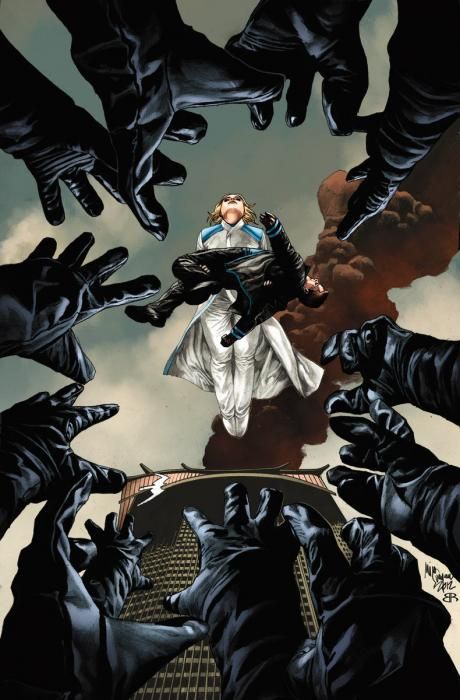"Harbinger" #6 begins a new storyline by writer Joshua Dysart and new artist Phil Briones. The story picks up directly after the blowout battle and the break between Peter Stanchek and Toyo Harada, the two sides in what is turning out to be a superpowers variation on New Money and Old Money. If "Harbinger" #6 had a theme, it would be social inequality, and Dysart references Occupy, the healthcare crisis and Noam Chomsky in a densely plotted story that draws Kris Hathaway into the battle against The Harbinger Foundation.
Until now, readers have seen almost nothing of Kris, but Dysart develops her character rapidly. She's very different than Peter or Faith in her self-awareness, her ability to think ahead and her sureness of herself. Kris narrates "Harbinger" #6 in first-person, and her bitter thoughts and feelings set the tone. One of the best things about "Harbinger" is Dysart writes characters that are believably fallible and dark, without making the entire comic noir or gritty. In "Harbinger" #6, Kris' intellect and rage drive the narrative. Peter made Kris fall in love with him and (since there wasn't true consent) raped her in "Harbinger" #1. It was inevitable that the two would meet again, although Dysart's choice of the when and how is refreshing and surprising.
The scene in which Kris gets a chance to confront Peter is superb in its dramatic tension. Dysart doesn't lessen either character's vulnerability or Kris' sense of violation in his dialogue. Given Peter's weakened state and Kris' justified hatred of him, Peter is in more danger in "Harbinger" #6 than he ever was in Harada's clutches. The power dynamic has shifted dramatically, even though, as Kris says, "at any moment he could makes me do anything he wants. He terrifies me." Of all the characters of in the original "Harbinger," Kris was the only one without superpowers, and Dysart has not only kept that dynamic intact, he's far more aware of the psychological dangers and narrative potential in power disparity than original series writer Jim Shooter.
Although she was a victim, Kris' first set of choices in how to strike back aren't actions she can justify fully, even to herself. It's frightening that Kris is, for time being, the only one in the driver's seat, because her mind is in an ugly place. In Kris, the Renegades don't lack for brains, daring or drive, but she's not an obvious hero either. There is much to both admire and to dislike in her character, and I applaud Dysart for not backpedaling on Kris' trauma or making her a morally perfect shrinking violet. Dysart's butterfly analogy is a bit forced, but it encapsulates neatly what he wants to do with the character.
"Harbinger" is a morally unusual, complex comic in that there's no clearcut moral leadership, even though every character is seeking it, and most of the characters on either side believe that they're morally in the right. Even if she recognizes that Peter "could be taught to be a better person," Kris isn't by default someone fit to be his teacher. Briones' art handles these emotionally fraught scenes well, and his body language and choice of camera angles are excellent in the confrontation scene.
As usual, the tragedy and seriousness of "Harbinger" is lightened by Zephyr. Her bright personality comes across in Dysart's dialogue and in Briones' body language when she twists are arms happily or floats higher. Faith brings out the best in everyone, and her conversation with Kris softens the other girl's character.
Dysart ends "Harbinger" #6 with Kris, Faith and Peter having a shared renewed purpose, and for the first time, there's a team. Although "Harbinger" is still a plot and character-driven comic, Dysart's focus on the divides between have and have-nots, between corporations and people and between adults and kids, add to the sociological and psychological depth of his story.

